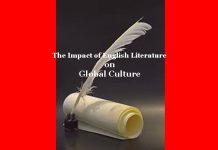Fenian Cycle-A Review
Fenian Cycle-A Review
Fenian Cycle-A Review
The Fenian Cycle, a prominent and captivating series of Irish mythological tales, occupies a central place within the broader corpus of Irish mythology. This cycle is characterized by its rich tapestry of heroic legends, captivating narratives, and profound insights into the cultural and historical landscape of ancient Ireland. Comprising stories of valiant warriors, mystical landscapes, and epic quests, the Fenian Cycle has left an indelible mark on both Irish culture and world literature.
Historical and Cultural Significance:
The Fenian Cycle is a collection of stories that emerged from the oral tradition of ancient Ireland, reflecting the cultural ethos and societal values of its time. These tales are believed to have been transmitted orally for generations before being recorded in written form, which adds a layer of historical depth to the cycle. They offer invaluable insights into the social structures, religious beliefs, and moral codes of ancient Celtic society, making them a treasure trove for historians and folklorists.
Characters and Themes:
At the heart of the Fenian Cycle are the larger-than-life characters who populate its stories. Chief among them is Fionn mac Cumhaill (often anglicized as Finn McCool), the legendary leader of the Fianna, a band of elite warrior poets and protectors of the realm. Fionn embodies the ideals of wisdom, courage, and loyalty, and his exploits are central to many of the cycle’s tales.
Themes of honor, loyalty, and heroism permeate the stories. The bonds between warriors within the Fianna, as well as their relationships with the land and nature, are recurring motifs that highlight the interconnectedness of individuals with their environment.
Narrative and Structure:
The Fenian Cycle comprises a diverse array of stories, ranging from epic quests to romantic narratives. Notable tales include “The Boyhood Deeds of Fionn,” which explores the hero’s early years and the acquisition of his legendary wisdom; “The Pursuit of Diarmuid and Gráinne,” a tragic love story that delves into themes of fate and betrayal; and “The Death of Fionn,” which brings a sense of closure to the cycle.
The narrative structure often involves a mixture of dialogue, action, and poetic interludes. This blend contributes to the dynamic flow of the stories and underscores the importance of oral storytelling traditions in Celtic culture.
Influences and Legacy:
The Fenian Cycle has left an indelible mark on Irish literature and cultural identity. Its themes and characters have permeated countless subsequent works, from poetry and theater to contemporary novels and films. Notably, the cycle has been an enduring source of inspiration for authors such as W.B. Yeats, James Joyce, and Seamus Heaney, who drew upon its mythic elements to craft their own literary masterpieces.
Contemporary Relevance:
In the modern era, the Fenian Cycle continues to capture the imagination of readers and scholars alike. Its exploration of timeless themes such as heroism, love, and the connection between humans and nature resonates across cultures and generations. Moreover, the cycle’s emphasis on the oral tradition serves as a reminder of the power of storytelling to transmit cultural heritage and preserve a sense of identity.
Critique:
While the Fenian Cycle offers a treasure trove of mythic narratives and cultural insights, it’s important to acknowledge that the stories have been influenced by centuries of retelling, translation, and interpretation. This can make it challenging to discern the original forms of the tales and their intended meanings. Additionally, some aspects of the cycle may not align with contemporary sensibilities, particularly in terms of gender roles and depictions of certain characters.
The Fenian Cycle stands as a testament to the enduring power of myth and storytelling. Its tales of heroism, loyalty, and adventure provide a window into the cultural landscape of ancient Ireland while continuing to captivate and inspire audiences today. Through its characters and narratives, the cycle offers both a lens into the past and a mirror for reflecting on the human experience, making it an integral part of world literature and cultural heritage. 0 0 0.
Fenian Cycle-A Review
You May Like Beowulf-A Review
N.B. The article originally belongs to the book entitled ‘The Reviews of Epic Literature Around the World Vol-II‘ by Menonim Menonimus.











